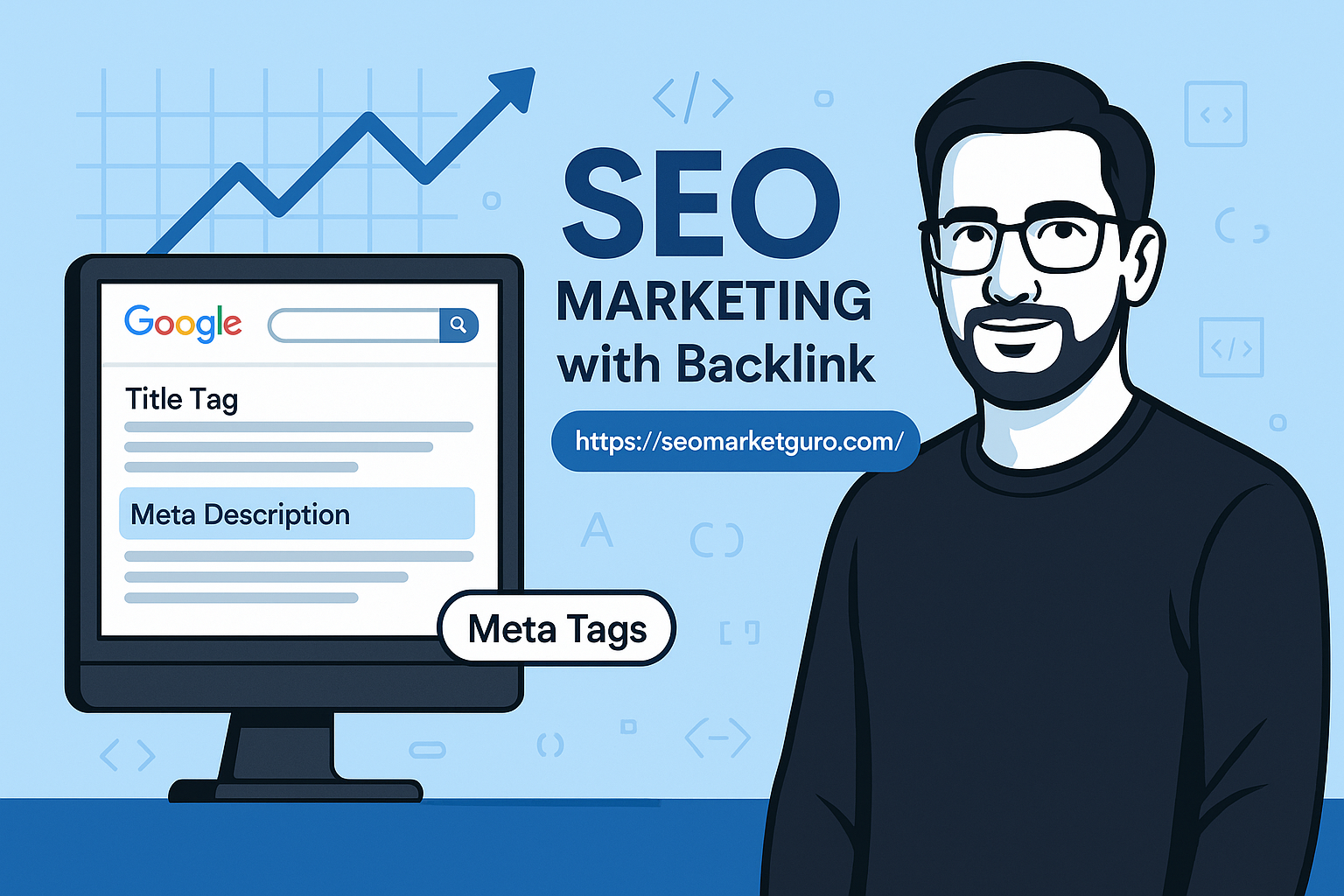
Best AI Meta Tag Generator For Free For Life Time
The Benefits of Meta Tags and Descriptions in SEO: A Complete Guide
Search Engine Optimization (SEO) is crucial for improving a website’s visibility and attracting organic traffic. Among the most important on-page SEO elements are meta tags and meta descriptions, which help search engines understand your content and influence click-through rates (CTR).
In this detailed guide, we’ll explore the benefits of meta tags and descriptions, how they impact SEO, and best practices for optimizing them to rank higher in Tier 1 countries (USA, UK, Canada, Australia, etc.).
What Are Meta Tags and Descriptions?
1. Meta Tags
Meta tags are HTML elements that provide search engines with information about a webpage. The most important meta tags include:
- Title Tag – The clickable headline in search results.
- Meta Description – A brief summary of the page’s content.
- Meta Keywords (less important today but still relevant in some cases).
- Viewport Tag – Ensures mobile responsiveness.
- Canonical Tag – Prevents duplicate content issues.
2. Meta Descriptions
A meta description is a short (150-160 characters) snippet that summarizes a webpage’s content. While not a direct ranking factor, it influences CTR, which indirectly affects rankings.
Key Benefits of Meta Tags and Descriptions in SEO
1. Improved Search Engine Rankings
- Search engines like Google rely on meta tags to understand a page’s topic.
- A well-optimized title tag with target keywords helps rank for relevant queries.
- Properly structured meta tags improve indexing and crawling efficiency.
2. Higher Click-Through Rates (CTR)
- A compelling meta description entices users to click on your link over competitors’.
- Including power words (e.g., “Best,” “Free,” “Proven”) can boost engagement.
- Adding structured data (e.g., star ratings, FAQs) enhances visibility in SERPs.
3. Better User Experience (UX)
- Clear, concise meta descriptions set user expectations, reducing bounce rates.
- Mobile-optimized meta tags (via viewport tags) improve readability on all devices.
4. Reduced Duplicate Content Issues
- Canonical tags tell Google which version of a page is the original, preventing SEO penalties.
- Proper use of robots meta tags (e.g.,
noindex) controls which pages get indexed.
5. Enhanced Social Media Sharing
- Open Graph (OG) tags and Twitter Cards ensure rich previews when links are shared on social platforms.
- Custom meta descriptions for social media increase engagement on Facebook, LinkedIn, and Twitter.
6. Local SEO Benefits (For USA & Tier 1 Markets)
- Including location-based keywords (e.g., “Best SEO Services in New York”) helps attract local traffic.
- Meta tags with schema markup (e.g.,
LocalBusiness) improve visibility in local searches.
Best Practices for Optimizing Meta Tags & Descriptions
1. Write Unique & Engaging Title Tags
- Keep title tags under 60 characters to avoid truncation.
- Place primary keywords near the beginning.
- Example:
- Weak: “SEO Services | Digital Marketing”
- Strong: “Best SEO Services in USA – Boost Rankings in 2024”
2. Craft Compelling Meta Descriptions
- Keep descriptions between 150-160 characters.
- Include a call-to-action (CTA) (e.g., “Learn More,” “Get Started”).
- Example:
- Weak: “We offer SEO services for businesses.”
- Strong: “Get top-rated SEO services in the USA! Increase traffic & sales with expert strategies. Free audit available!”
3. Use Relevant Keywords Naturally
- Avoid keyword stuffing—Google penalizes over-optimization.
- Use LSI keywords (e.g., “SEO tips” alongside “search engine optimization”).
4. Ensure Mobile & Schema Optimization
- Use responsive meta tags (viewport tag:
<meta name="viewport" content="width=device-width, initial-scale=1.0">). - Implement schema markup for rich snippets (e.g., reviews, FAQs, breadcrumbs).
5. Avoid Duplicate Meta Tags
- Each page should have a unique title and description.
- Use canonical tags if similar content exists across multiple URLs.
Conclusion: Why Meta Tags & Descriptions Matter for SEO
Meta tags and descriptions play a pivotal role in SEO by:
✅ Improving rankings through better keyword targeting.
✅ Boosting CTR with persuasive snippets.
✅ Enhancing UX by setting clear expectations.
✅ Supporting local and mobile SEO for Tier 1 audiences.
By following best practices, businesses in the USA, UK, Canada, and other Tier 1 markets can maximize their organic visibility and drive high-quality traffic.
Pro Tip: Regularly audit your meta tags using tools like Google Search Console, SEMrush, or Ahrefs to ensure optimal performance.
Would you like a free SEO audit of your website’s meta tags? Let us know in the comments! 🚀
Meta Description for This Article:
“Discover the power of meta tags & descriptions in SEO! Learn how to optimize them for higher rankings, better CTR, and improved traffic in USA & Tier 1 countries. #SEO #DigitalMarketing”





















Post Comment